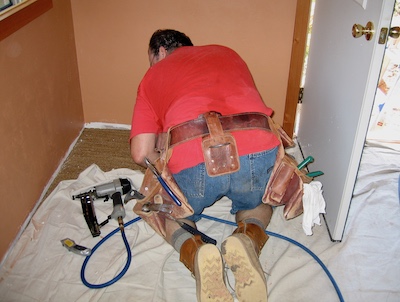
Ergonomics assessment of repetitive work – where the work area, materials, and tools are consistent and cycles are short enough that you can observe the activity numerous times in an hour or two – isn’t always easy. But assessing and improving ergonomics of non-repetitive jobs – which might include unplanned tasks, non-routine duties, and field-based work – is nearly always hard. Here are four problems (and solutions) for assessing and improving non-repetitive jobs:
- It can be terribly inefficient to even observe tasks in non-repetitive jobs to conduct an ergonomics evaluation. Some problematic tasks might only occur every few days or even weeks. One approach is to ask workers to identify their most difficult situations and observe them as they simulate the work.
- Some non-repetitive work consists of a series of unique tasks, performed by workers using different work methods. Group tasks into common themes, and observe multiple workers to get a sense of the challenges faced.
- Ergonomics screening surveys (such as REBA or RULA) are usually applied to assess risk in repetitive tasks, especially when awkward postures are observed. Deeper dive analysis tools (such as the NIOSH Lifting Equation or Ohio BWC/OSU Push-Pull Guidelines) are useful when evaluating key repetitive and non-repetitive tasks.
- Workplace improvements for ergonomic challenges can be much harder to identify and refine in dynamic environments (different settings, work methods, etc). Try involving workers in generating improvement ideas, and involve as many workers as possible in evaluating and refining ergonomic improvements.
Consider using setting-specific ergonomic checklists for improving non-cyclical jobs. These simple tools – usually a series of yes/no questions to quickly identify the presence of potentially problematic situations or activities – can help you streamline the ergonomic improvement process and get past the “analysis paralysis” that sometimes comes with addressing the ergonomics of non-repetitive jobs. This approach is described in Ergoweb’s Using Setting-Specific Ergonomic Checklists for Non-Cyclical Work – which you can download.
Make sure to also check out our other Ergoweb Guides:
